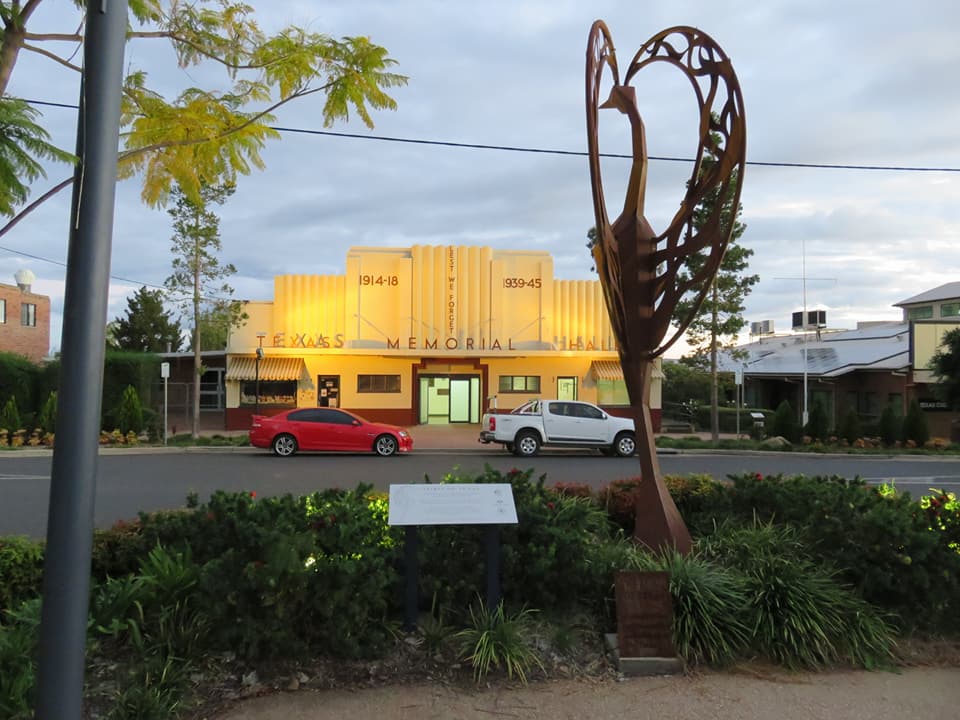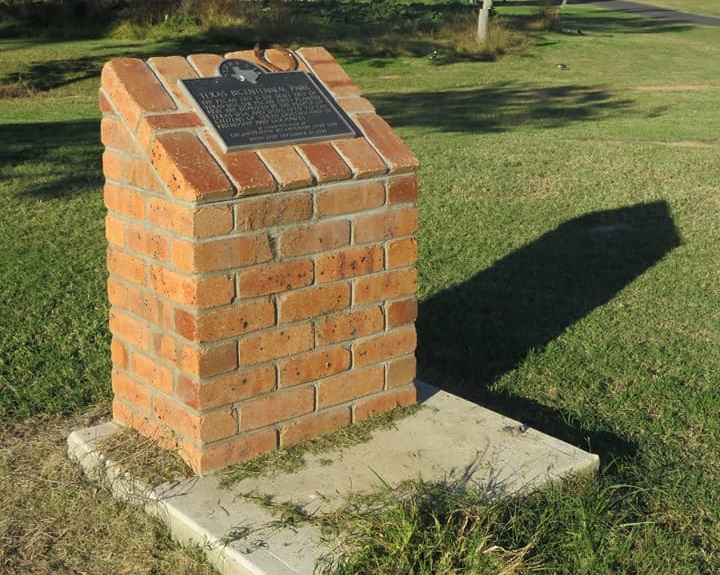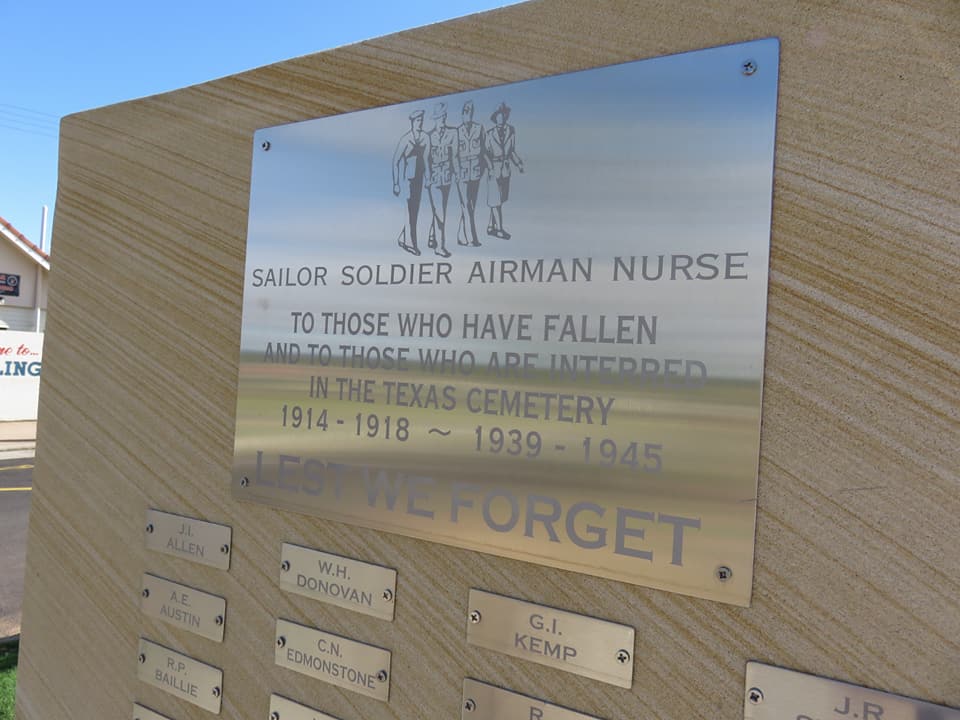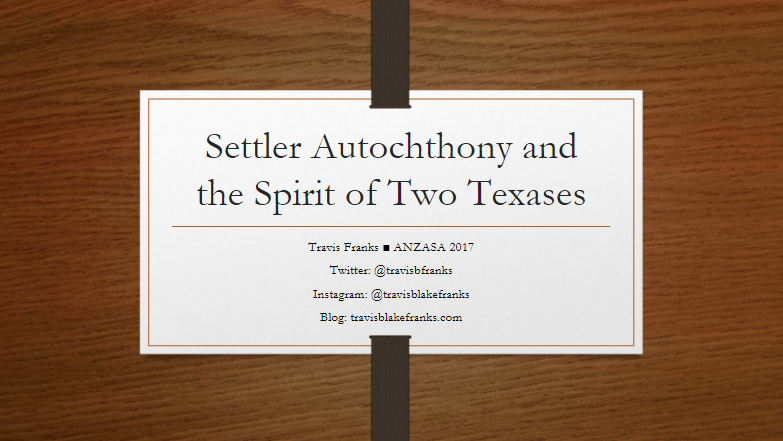AustLit
-
Broadly, my Fulbright project consisted of two parts: an internship with AustLit at University of Queensland and a research assistantship with the Texas Heritage Centre and Tobacco Museum in Texas, Queensland. Together, these two roles represent the scope of my work in cultural studies, from in-depth literary criticism on narratives of settler belonging to embedded ethnographic research on the legacies of settlement history.
In terms of outcomes, I developed Contemporary Settler Literature: Resources for Students and Teachers as an exhibition for AustLit. Through researching archival material in state libraries in Brisbane and Melbourne, I located primary sources concerning the principle figure behind the settlement of Texas, Queensland, that added crucial details to a history full of silences. Additionally, I conducted research of my own regarding the monument and memorial culture of the present-day town of Texas, and I presented some of these findings at the Australia and New Zealand American Studies Association's biennial conference. I also took part in the Texas Country Music Roundup, playing and singing a few of my favorite folk and country songs.
-
The Spirit of Texas is a public art installation commemorating the 2011 floods. The large bird represents both the local water fowl that were present after the floods and the mythical Phoenix, which represents regeneration after disaster. Located on a prominent stretch of High Street, Texas's main thoroughfare, The Spirit of Texas noticeably stands adjacent to Texas Memorial Hall, a grand Art Deco building bearing the inscription 'Lest We Forget' on its facade. Read in unison, the installation and building create a narrative of courage, sacrifice, and remembering at the local and national levels.
-
The Texas Bicentennial Park was dedicated in September of 1988 in order to commemorate 200 years of Anglo settlement. Just behind the cairn pictured here are three Pecan trees, which the plaque notes were donated from Texas, USA, as a sign of friendship and goodwill with the community of Texas, Queensland. The Pecan tree is recognized as the official state tree of Texas, USA.
This park and monument are important because they bring together local, national, and transnational narratives. As with The Spirit of Texas and Texas Memorial Hall, the community of Texas is engaging with a national narrative that asserts that Australian identity begins in 1788 with the arrival of British troops and the establishment of a penal colony in New South Wales. At the same time, the plaque and Pecan trees represent an international connection with its American namesake, linking Australia and the US via places we have come to think of as "Texas."
-
The names of all Texas residents who died serving in World Wars I & II and other conflicts are displayed on this massive stone monument, while the names of those lost during the World Wars are also displayed within Texas Memorial Hall.
This specific memorial stands in the traffic island on Avon Street, directly across from the Texas & District Memorial Bowling Club building. It's worth noting that the Bowling Club building features a brick and metal archway with the phrase "In Remembrance" appearing in the arch. Just as is the case with The Spirit of Texas and Texas Memorial Hall, I contend that this stone and the Bowling Club archway are situated so as to be read in conversation.
-
The Australian and New Zealand American Studies Association (ANZASA) is a professional academic organisation dedicated to the study of humanities and social sciences issues of the United States. ANZASA publishes the Australasian Journal of American Studies (AJAS) and hosts a biennial conference. In 2017, the conference took place on the Sydney campus of Australian Catholic University. I gave a presentation titled "Settler Autochthony and the Spirit of Two Texases" in which I talked about some of the research I'd previously conducted in Texas, Queensland.
This presentation looked at monuments, memorials, and publications associated with public memory in Australia and the US to demonstrate that narratives of settler belonging are produced and reproduced on local, regional, and national levels. But by juxtaposing an art installment commemorating the community response to flooding in the rural Australian community of Texas, Queensland, with memorials within the Texas State Cemetery in Austin, Texas, I also questioned the possible existence of contemporary transnational narratives of settler belonging. In my larger project, I’m particularly interested in how settler commemoration takes place around the spirit of place—in this case, “the spirit of Texas.” Drawing particularly from the work of Aileen Moreton-Robinson, I argued that a comparative analysis of the versions of public history and public memory constructed by the set of monuments and other texts drawn together in this presentation not only reinforce both countries’ foundational myths of colonial imperialism and nationalism, they also expose a shared, transnational framework for expressing settler identity that emerges out of a mutual Western epistemology for conceptualizing and perpetuating the right to belong.
-
You've probably heard that platitude about reading being a window into other worlds. And that’s mostly true. Reading and imagination do transport us. In my case, studying literature has taken me from a small, rural town in Texas to an even smaller, more rural town called Texas in southern Queensland, Australia. I’ve read myself not into another world, necessarily, but into a different part of it. It wasn’t until I got there that I realised how much I stood to benefit by experiencing Australia’s literary culture in-person. A Fulbright fellowship made that possible.
Even though much of the work I undertook during my program took place in libraries and digital archives, I could not have truly been immersed in Australia’s literary history without working face-to-face with my advisors. From sitting in on classes and attending academic conferences, I learned that there are disciplinary differences in the ways in which my field operates in the US and Australia. As someone who hopes to appeal to both audiences as a scholar, I know that my time here has been invaluable in the sense that it has made me aware of these differences. The guidance and support my mentors provided sent my research into directions I might have only stumbled upon much later by accident had I been back in the States, working with limited resources. Quite frankly, there are resources in private collections at UQ that I can’t access without physically reading them.
Then there are those conferences which took place in Brisbane, Sydney and Melbourne. Without the Fulbright, international conferences like these would have been beyond my reach. And the same is true of the fieldwork I did over three trips to Texas, Queensland. With roughly 900 residents and little online presence, most people outside of the region don’t even know the place exists. To my great surprise, I found a wealth of research opportunities there—but, again, I had to be there in person to do so.
My academic focus is the study of literature and, true, you can read a book just about anywhere. But it’s something else to live within in the culture that produces those stories and their writers. Fulbright brought me to Australia and my work--and my life--are richer for it.
-
A portion of my research was made possible through funding provided by the Lois Roth Endowment.
'The Lois Roth Endowment honors the life and work of Lois Wersba Roth by promoting and encouraging dialogue across national, linguistic, disciplinary and cultural boundaries, focusing on countries that were especially important to Lois in her life and career. The Endowment seeks to do this in four ways: Awards for Excellence in Cultural Diplomacy recognize the outstanding contributions of individuals working in the service of US cultural diplomacy; Translation Awards foster respect for literary translation; Project Support helps young people in countries to which Lois was particularly attached accomplish projects in the arts, humanities and social sciences and is awarded only in tandem with primary funding agencies; and Sponsored Programs pursue parallel goals through on-going collaborative programs. Roth Endowment awards, project support and sponsored programs build on close collaborations with a wide range of partner organizations, including the Australian-American Fulbright Commission
'Programs that enable scholars and artists to live and work in other countries for a time are at the heart of international exchange and what we can understand as cultural diplomacy in a broader sense. Lois Roth worked with such programs throughout her career, both at the American Scandinavian Foundation and with the U.S. State Department. The Roth Endowment seeks to reinforce the service rendered by Fulbright and other such programs by offering supplementary support for projects in the social sciences and humanities, including the visual and performing arts. Project Support is awarded only in tandem with primary funding agencies and assists students, scholars and artists in taking advantage of opportunities that deepen their international experiences.'
For more on the history of Lois Roth Project Support of Australian Fulbrighters, click here.
You might be interested in...








